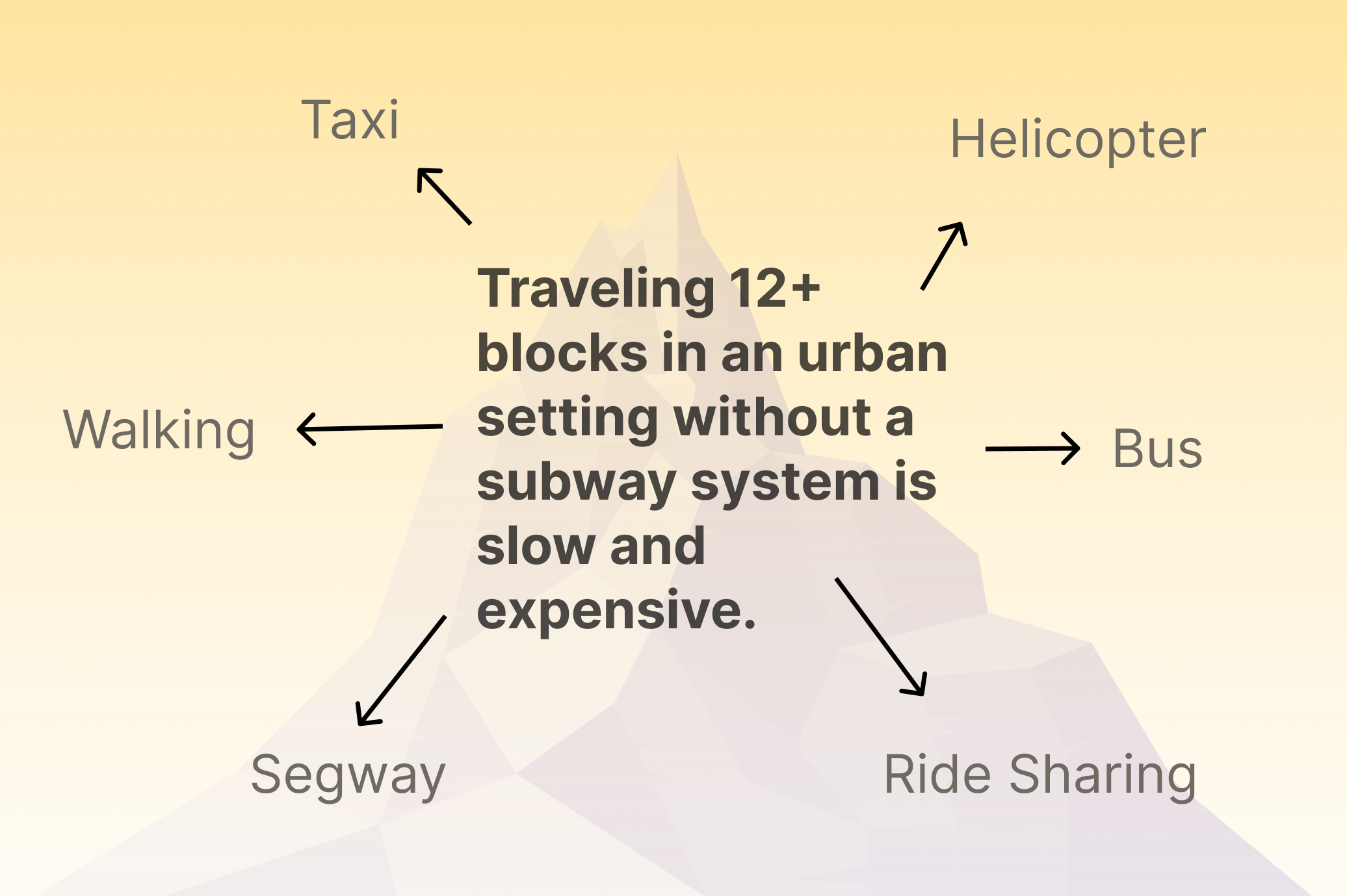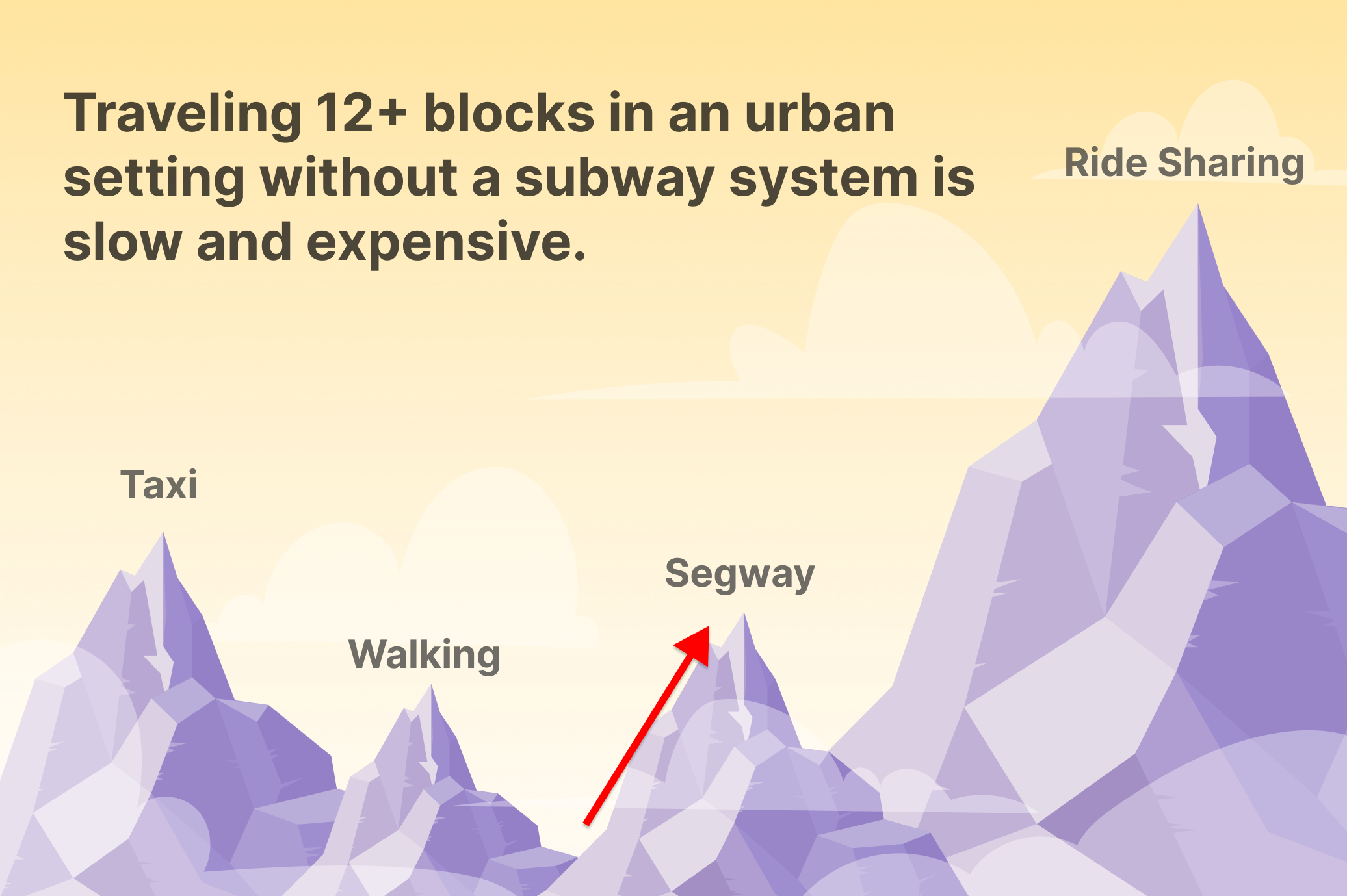I’ve seen it again and again. I’m sitting at a table across from a bright-eyed founder passionately describing his or her idea. They are describing in detail how their product or service is going to be a game changer - how it’s impact is going to be tremendous.
And then I ask “what is the customer’s problem you’re trying to solve”?
Crickets.
In the excitement of dreaming and building products and services, it’s easy to fall more in love with the solution we’re building than the problem that solution is trying to solve. When this happens, we start creating widgets that are no longer effetive at solving our customer’s problem.
Segways are a solution looking for a problem
I was a senior in high school at a national robotics competition when Dean Kamen rolled out onto the stage to introduce his newest invention - the Segway. Dean shared a beautiful keynote speech talking about how Segways were going to change the world - from postal delivery to urban transportation.

The problem was that while the technology was revolutionary and it was a very cool demonstration, there wasn’t a clear problem it was solving. As a result, it never took off.
What is a problem statement Dean could have started at?
Let’s imagine a list of potential problem statements Dean could have started with. These problems should be as specific as possible. In describing the problem we’ll avoid using words like “it’s hard” or “it’s difficult” and instead use descriptors like “it’s slow” or “it’s expensive”.
- Traveling 12+ blocks in an urban setting without a subway is slow and expensive.
- Postal workers in city centers struggle with fatigue from the long distances they must walk.
- Tourists desire to see large parts of a foriegn city but feel too removed from the city when looking out a bus window.
- Not all travelers are able to travel quickly through large airports due to health and age constraints.
It’s not hard to see that if you start with the problem (i.e. fall in love with the problem), it leads you on a very different path for how to solve it.
When we start with the problem, it exposes new solutions
Let’s say Dean picked the first problem statement of “Traveling 12+ blocks in an urban setting without a subway is slow and expensive”. From there, the brainstorming would have all been centered around the problem and might look something like this.

It’s possible Dean would have still created the Segway. But in developing it, he would have constantly been focused on how it would handle different terrain encountered in city life. Was it fast enough? Did the battery life last long enough to go 12+ blocks? Could it handle construction and other common obstacles encountered in a city?
It’s equally possible he would have stepped into ride sharing and created some sort of pre-smartphone Uber system.
But when we start with the solution, we blind ourselves from seeing alternatives
When we start with a technology we love or solution we’ve developed, we end up fixating on that. We spend all of our time optimizing and perfecting that solution only to arrive at the summit and realize we were climbing the wrong mountain.

How to avoid creating a solution in search of a problem
The most important question you can answer when starting your startup is “what is the problem I’m trying to solve and who am I solving it for”? No one cares about how cool, innovative, or elegant your solution is, if it doesn’t actually solve a problem they are having.
Be relentless about this. Write it down. Condense it to a single sentence. And then talk to everyone you know about that problem and see if it resonates. If it does, you might just be ready to start thinking about how to solve it.

